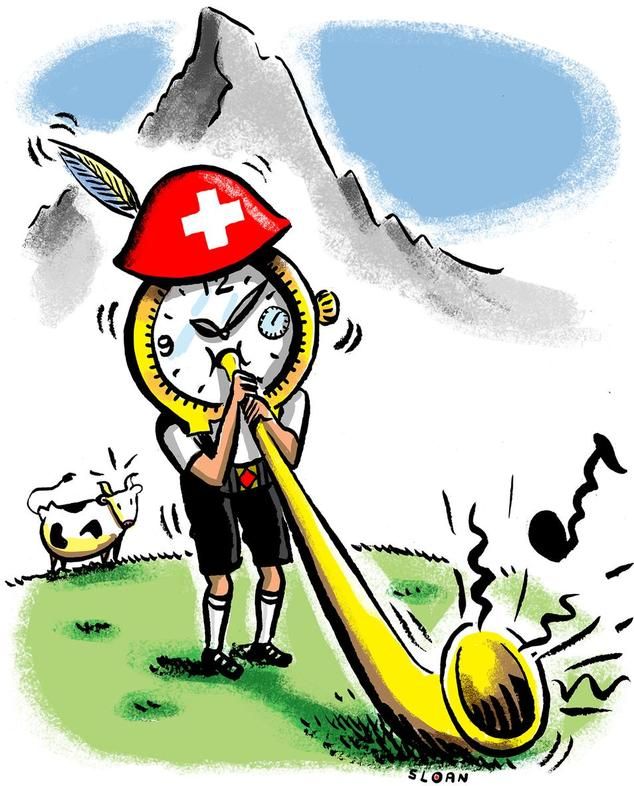The "60% Rule" to call Swiss-made watch

Q: I’ve heard that only 60% of a watch needs to be made in Switzerland to be labeled “Swiss-Made.” Am I getting bamboozled?
A: No, you are not being bamboozled, hoodwinked or conned. But you have raised one of the thorniest questions in the watch world, one of which anyone buying a timepiece should be aware: When is a watch entitled to bear the reassuring, status-sealing words “Swiss Made”?
The answer lies in a Swiss law called the “Swiss Made Ordinance”—commonly known as the “60% Rule”—that’s been in force since January of this year. People often erroneously assume the rule dictates that 60% of the parts of a watch must be made in Switzerland to earn the timepiece a “Swiss Made” label. The rule is, however, more subtle, stringent and comprehensive than that.
The law is precise: A watch can only be represented as Swiss if “its technical development has taken place in Switzerland”—including research and development, construction and prototyping—and “the watch’s movement is Swiss.”
A Swiss mechanical movement is one whose technical development, assembly and inspection have all been undertaken by the manufacturer in Switzerland. Furthermore, at least 50% of the movement’s constituent parts must be of Swiss manufacture.
As for the “60%” part of the “60% Rule”? The final condition is that at least 60% of the manufacturing costs—for both the movement and the overall watch itself—must be incurred in Switzerland, as a result of paying for Swiss labor, for Swiss materials and so on.
For the Swiss, this is a financially sensitive issue. What’s most at stake is the perception of quality. A 2016 study conducted by the Institute of Marketing at the University of St. Gallen interviewed 7,900 people from 15 countries about their perception of quality products from different countries. It found that consumers (especially those in China, Brazil, India and Russia) are prepared to pay up to 100% more for a Swiss luxury watch (versus one from a non-Swiss brand).
Will the “60% Rule” erode this perception—or does it affect the performance of the Swiss watch on your wrist? Not at all. The Swiss are not trying to fool you; in the face of increasing competition, they are taking measures to preserve their watch industry, hanging on to the prestige accorded “Swiss” watches but acknowledging certain realities. The Swiss, for instance, cannot produce some watches without importing a variety of materials. The country lacks gold mines, so it imports gold. Ditto: raw steel. And alligators don’t slither their way through the Alps, so the Swiss import alligator straps.
Some brands are unhappy with the rule, feeling it calls into question the legitimacy of a Swiss-made watch. H. Moser & Cie—in a rare instance of watch-industry satire—created a 100% Swiss watch with a real Swiss-cheese case and a Swiss cowhide strap (it sold for about $130,000 at Christie’s in May). The brand proclaims its (non-cheese-adjacent) watches are 95% Swiss.
Many Swiss luxury-watch brands boast vertically integrated manufacturing operations, which means a high percentage of manufacturing is done in-house, far exceeding the law’s requirements. You can ask about percentages at a brand’s retail shops, if you’re curious.
Wondering why exactly the rule was deemed necessary, I contacted Jean-Daniel Pasche, president of the Federation of the Swiss Watch Industry, a trade organization. In an email he wrote: “The rate of 60% is the result of a compromise among the industry...adopted by the Swiss government. It was not possible to fix a higher rate as this would have been considered as a protectionist measure in contradiction with WTO [World Trade Organization] rules and free trade agreements. On one side, the rate of 60% ensures a clear majority of Swiss value within a Swiss-made watch. On the other side, this rate grants a certain flexibility for the brands in the sourcing of components.”
The Swiss know that a healthy industry depends on competing in every price segment. The 60% Rule means inexpensive watches produced in Switzerland may still carry the “Swiss Made” label. Also, the law ensures that the well-paying jobs for highly skilled watchmakers stay there. We’re hoping that goes for the cheese gurus too.
Source: https://www.wsj.com/amp/articles/how-much-of-a-swiss-made-watch-is-swiss-1502982193
i follow you now you follow me lets's work together